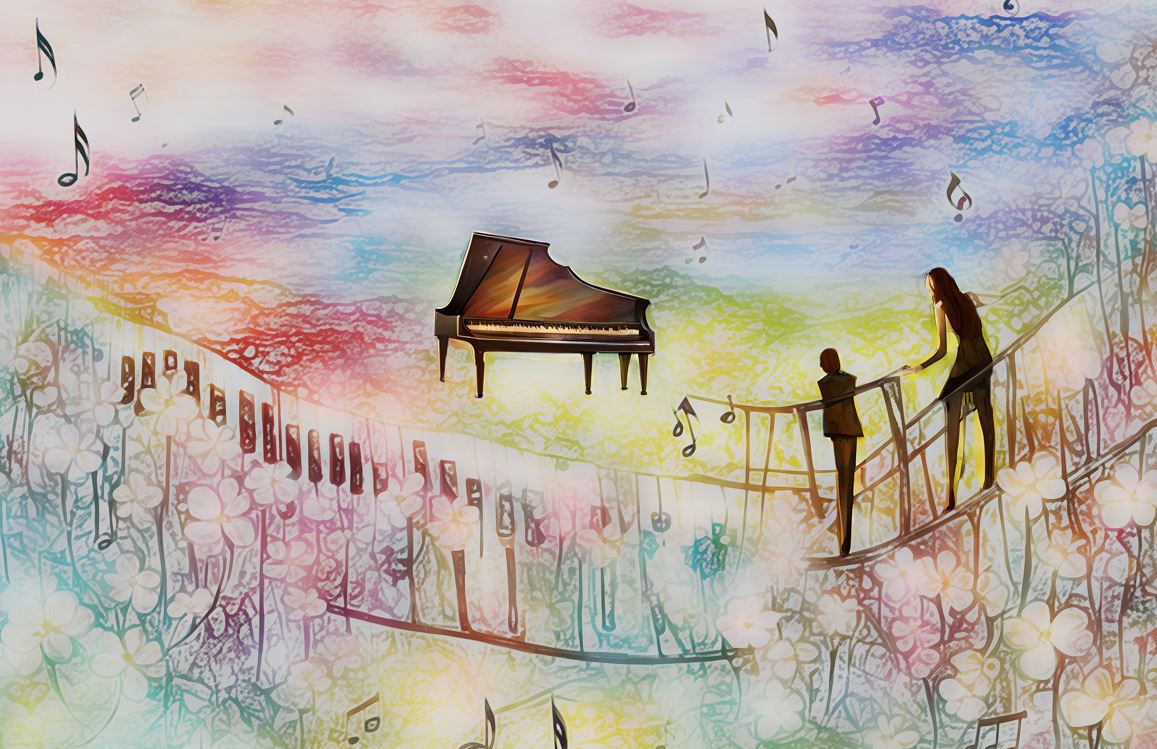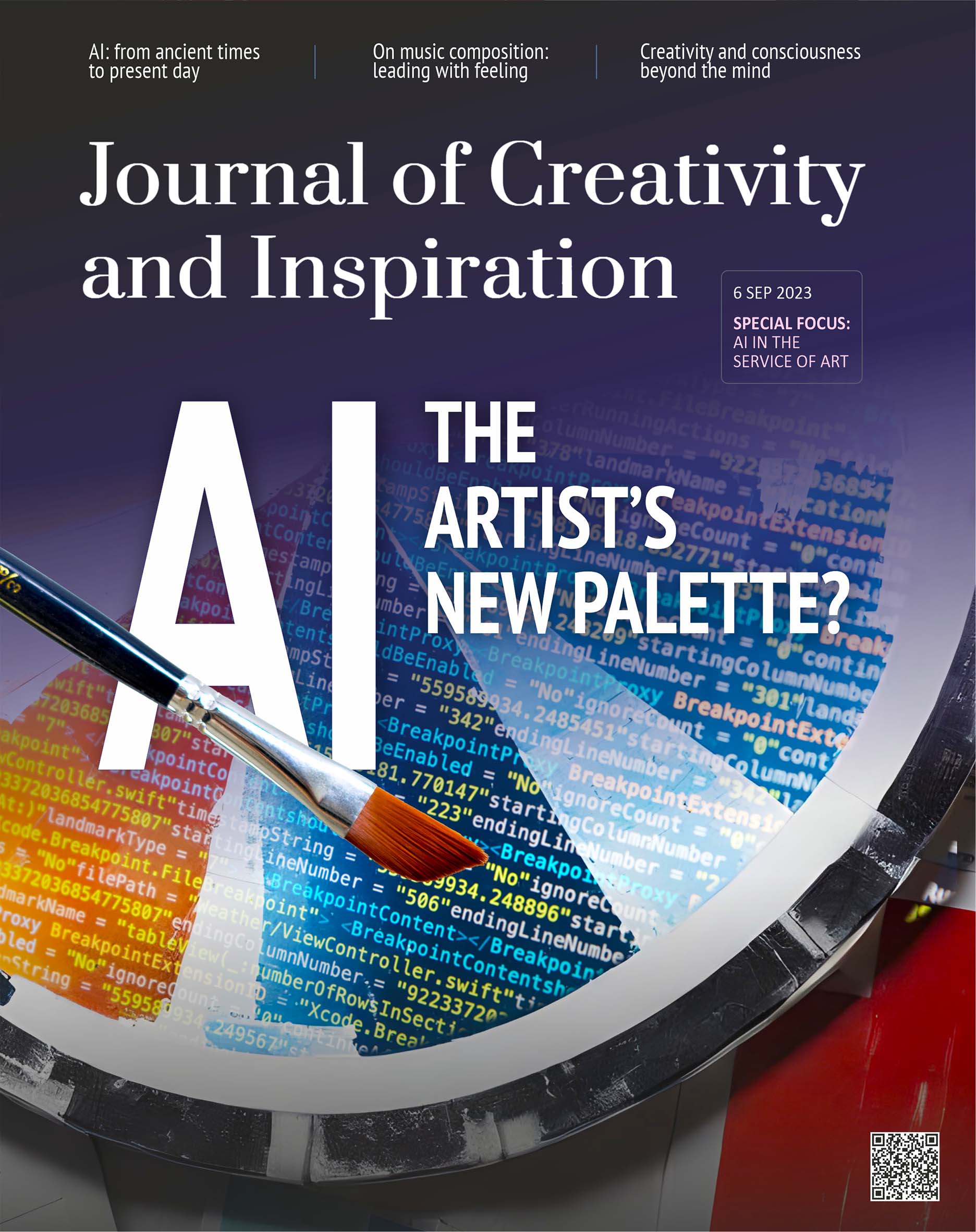On music composition: leading with feeling
6 September 2023 – Vol 1, Issue 1.
I have never been to a music school. I am not a music producer. I never officially studied music production or composition. Yet I have composed sound scores for multiple short films that were distributed nationally in India. My background and experience have ultimately led me to the realisation that creativity can come from anyone, anywhere. For at its essence, art channels creativity and imagination; technique and abstract knowledge are simply mediums that enable expression. For me, that meant being able to create orchestral music scores, using a single instrument: the piano.
To be clear, even though I have not formally enrolled in a music school, I still have a background in musical education. I am classically trained in both the piano and the violin, and even took choral singing lessons; as a result, my exposure to music became an interesting amalgamation of classical music by composers such as Mozart, Beethoven and Bach, along with whatever pop music my parents listened to at the time (a lot of The Police, Scorpions, ABBA and occasionally Bob Marley). My parents tell me that I always had a strong reaction to music – for example, the first few bars of Michael Jackson’s “Bad” apparently made my three-year-old eyes widen in fear, while the trick to getting me excited to go to preschool involved playing “We’re going to Ibiza!” by Vengaboys. As far as my personal memories go, I remember the first instrument I ever played: the recorder. I must have been around four years old, and my mother was my teacher. Once I gained the ability to play small pieces by myself, there was simply no going back.

‘The Piano’s Dream’, by Gil and Natalie Dekel and AI (encaustic wax, AI, Photoshop), 2023.
Music has always made me feel connected to my deepest feelings; feelings that lie beneath conscious comprehension and articulation; simultaneously, music has the ability to carry me beyond, to lift my soul above the mundane and into a realm of pure, powerful beauty.
As much as my passion for music remained strong, my career took a slightly different turn, with my degree in English literature leading me into the world of advertising and copywriting. But the agency I worked at was not your typical advertising firm – instead of television commercials and print ads, I was plunged into the world of branded content, in the form of short films and storytelling.
It was here that the opportunity for me to take my passion for music further presented itself, in the form of music composition.
I still remember my very first composition project, an animated short film called ‘Hope, the Boat’, for a beverage company named Paper Boat. I had successfully convinced my company to allow me to take the lead on the music front, and now that it was finally happening, the biggest question that struck me was – where do I begin?
I looked at references, fiddled on the piano, tried experimenting with a few odd melodies – nothing worked. It was one thing to read sheet music and bring your own interpretation to a piece, but it was another thing altogether to create the piece itself. Inspiration finally struck me when I re-read the script and immersed myself in the story of Hope, a little paper boat that goes on an adventure. It was a simple but beautiful story, and my heart warmed to the little boat floating through turbulent waters in pursuit of its dream – and that’s when I realised what I had to do.
My music score had to make people feel.
Unlike an isolated piece of music, a score works with a script; it serves to heighten the strength of every emotion in the written story, turning it into something more than just words on a page. A music score turns a story into an experience, and that’s what my score needed to do – when Hope struggled, the audience had to share Hope’s pain and loss, and when Hope triumphed, the audience must feel the depth of the little boat’s joy, and the weight of what it took to make its dream come true.
With that, I began my composition.
Even though I play both the piano and the violin, I choose one primary instrument when composing – usually the piano, as it is much easier for me to visualise music through a piano than the much more technically complicated violin. However, if a composition requires a more lyrical, song-like melodic approach, I lean towards the violin.
In the case of ‘Hope, the Boat’, I chose the piano. I started by creating a couple of phrases that to me captured the essence of the story as a whole – think of this as being along the lines of creating a theme song for a television show. These phrases set the melodic palette and tone for the rest of the film. Over the next few weeks, I used a rudimentary grey-scale version of the film to play in time with it, trying out different moods and melodies along the way. Although this was an intensive process, involving several late nights, I enjoyed every minute.
When my composition was complete, I took the final melody – played in time with the film – and placed it on a midi track using Apple’s GarageBand software (as I mentioned earlier, I know practically nothing about music production). Once the piano score was on GarageBand, I added other orchestral instruments wherever I felt they were necessary – think of this as creating a sort of blueprint for the final score.
Then it was off to a studio, where I collaborated with producers who took my blueprint and worked with me to refine it, adding their own creative inputs along the way, which filled in gaps that my lack of technical knowledge could not address – that being said, my main melody never changed; the producers contributed largely to the score’s arrangement. Once we were ready, the final track was exported, and my very first short film score was complete.
Since then, I have composed several other scores, and I use the same basic process for all of them. If I ever feel rather under-prepared for a certain style of music, I take it upon myself to research and listen to as much music of that style as I can.
Along the course of my journey in composition, I had the opportunity to speak in detail with producers I collaborated with, and I asked them their thoughts on the merit of practical versus theoretical knowledge. When it came to the kind of music I was creating, the unanimous response was this: theoretical knowledge never hurts, but it is far more valuable to learn from experience. I both agree and disagree with their perspective; I agree that theoretical knowledge can only take you so far, but my prior knowledge about the piano and violin, not to mention the ensemble experience of being in a choir, as well as the ability to read sheet music, proved invaluable whenever I worked on a music score. That being said, I also know of musicians who cannot read sheet music but have still composed incredible songs. Personally, I lean toward a healthy mix of both theory and practice when it comes to the musical field that I am passionate about, for without my theoretical knowledge, I wouldn’t know where to start when it came to getting the music out of my head and into the world.
Composing for brands involves being able to adapt to a wide variety of musical genres and styles, and I must confess, this is the most challenging part of the process. After my initial research, my primary goal then becomes finding the balance between what my clients ask for and what I can deliver. To give you an example, I was once asked to compose a song for a music video about children in a village in Rajasthan, India. My client wanted the track to sound “as if Disney created a Rajasthani song”. I am not trained in Indian classical music, and for a while, this project appeared to be rather daunting. But then I explored Disney’s music in detail, noting how they created songs for movies based on so many different parts of the world but always managed to bring both a contextual and universal appeal to them. So instead of trying to imitate Indian classical music, creating an inauthentic copy at best, I led with my skill sets, and focused on the song itself, its mood and meaning. I then composed a melody for the song that followed a more universal melodic palette, but then I worked with a studio that brought in Indian classical musicians who embellished my melody and added beautiful contextual touches to it, ultimately creating a track that was exactly what my client wanted.
Although my process might vary slightly with each project I work on, the overall foundation of my method remains leading with feeling – what do I want my audience to feel? If a short film is set in the Arctic tundra, how do I make my audience feel the icy beauty of snow gently falling onto untouched earth? If I am telling a ghost story, how do I make my audience feel not just the spookiness, but also empathy for the characters? How do I use music to express the complexity of the layers of human emotion?
Therein lies the beauty of music composition, in being able to transfer the effect music has on myself to others, to make them feel exactly what I feel without having to say a single word.
Aradhana Mathews is a writer and brand strategist by profession. She is also a grade eight pianist and plays the violin as well. Aradhana has scored national campaign films for multiple brands and collaborated with musicians across the world. In addition to music composition, Aradhana also sings, composing original songs which she performs at local events.
